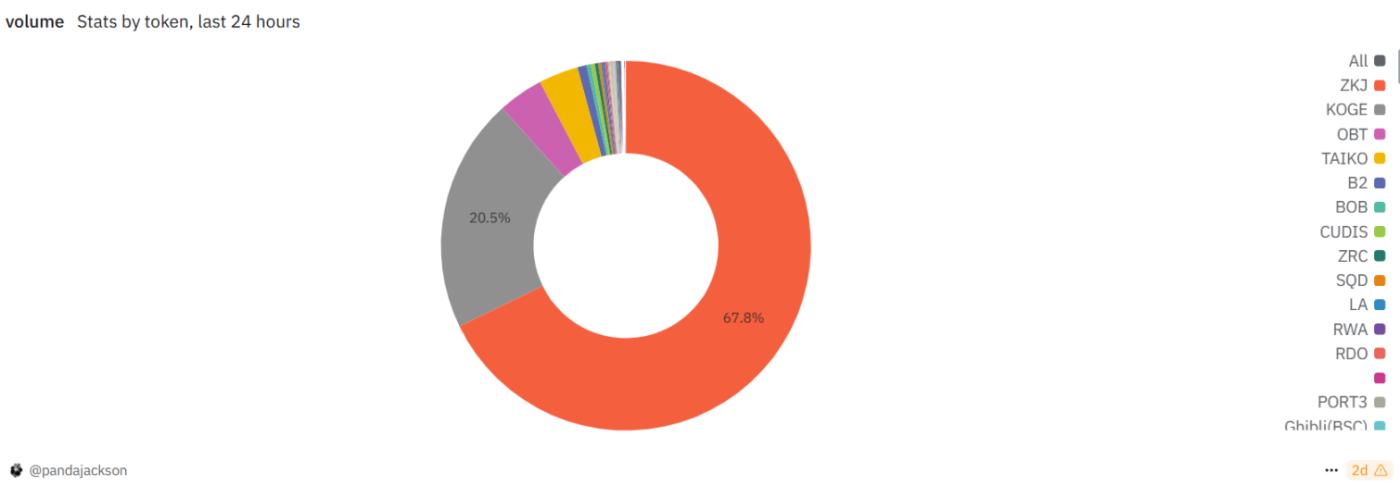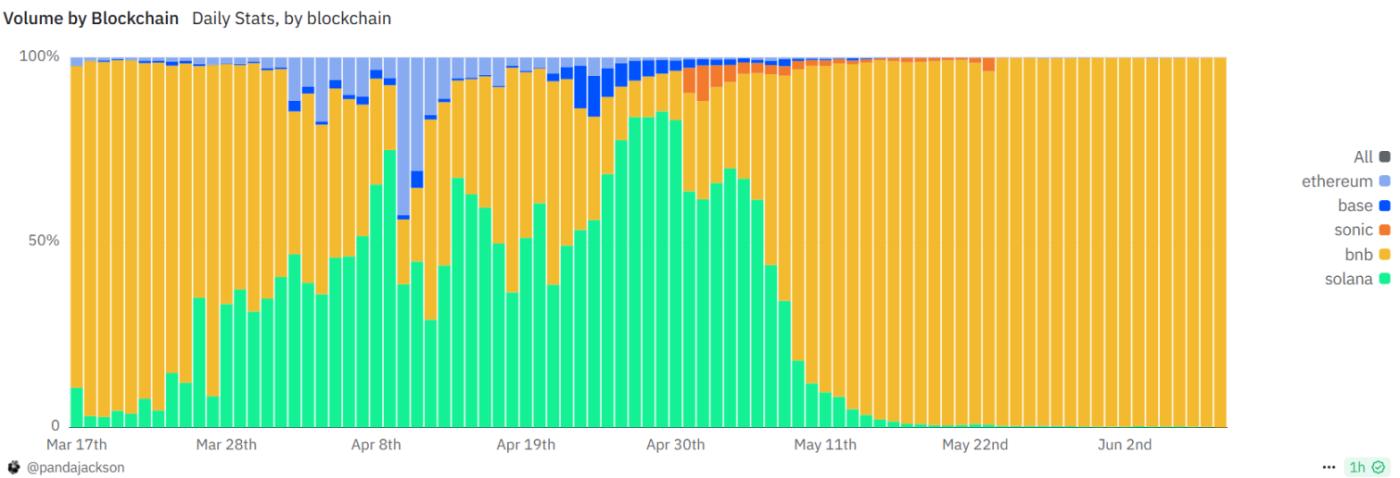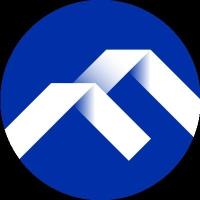Author: 1912212.eth, Foresight News
On June 8, Binance Alpha launched Open Loot (OL). The airdrop threshold requires at least 233 points, which is the highest point requirement since Binance Alpha adopted the point system. Since June this year, the Binance Alpha airdrop participation threshold has been continuously rising, from just over 200 points to 223, and finally to 233 points, with rising scores and thresholds, while market participants have become "numb".
Since its launch in December 2024, Binance Alpha has attracted countless players with its low threshold and high-return airdrops and TGE. However, the continuous rise of point thresholds now raises the question: Is this point frenzy approaching its end? Will it continue to escalate?
High-Cost Game: Why It's Becoming Harder
The attraction of Binance Alpha lies in its return potential. According to airdrops.io, in May 2025, the platform's 5 airdrops averaged $270 in first-day value per user, with a potential total value of $656 at historical peaks. For example, the SIGN airdrop of 1,500 tokens was worth about $177, and BOOP and NXPC airdrops also brought users considerable earnings. Compared to the uncertainty of traditional on-chain airdrops, Binance Alpha's transparent rules and quick redemption mechanism have attracted players.
However, high returns come with high costs. Points are mainly obtained through asset holding and token purchases. For trading volume points, purchasing $2 of Alpha tokens earns 1 point, with an additional point for each doubling (8 dollars earns 3 points, 1024 dollars earns 10 points).
Now, assume an ordinary retail investor with an exchange balance between $10,000 and $100,000, with a daily balance point of 3. According to the trading volume point rules, if an ordinary player wants to obtain 15 points, they need to reach a trading volume of around $32,000, and this is only the buying requirement (selling is not counted towards points). If a new player starts from zero to accumulate trading volume, they need to persist for at least 13 days to qualify for the Binance Alpha airdrop. This undoubtedly poses a significant challenge to the capital scale and patience of ordinary retail investors.

Additionally, Binance Alpha introduces point consumption in the airdrop token process. Typically, each airdrop claim or wallet TGE activity requires 15 points. This means that if points have just met the threshold, claiming this airdrop will make the next airdrop inaccessible. This tests players' judgment - if the current airdrop project is of average quality, claiming it might only be worth tens of dollars, while missing the "next" airdrop or TGE worth hundreds of dollars represents a significant time and opportunity cost.
The "wear and tear" cost during trading cannot be ignored. Foresight News noted that when trading certain tokens, even buying and quickly selling can result in losses of up to tens of dollars. Therefore, players must comprehensively consider transaction volume, price fluctuations, and other factors when choosing tokens, or they might find that despite aggressive trading, the airdrop earnings cannot cover the costs.
MEV issues are also worth attention. Without MEV protection, losses can be severe. According to AI Aunt's monitoring, on June 8, a user trading KOGE/USDT was sandwiched for $47,000, spending 47,000 USDT to buy only 0.009 KOGE, with a per-token cost of $5.18 million.
However, as long as airdrop earnings exceed wear and tear costs, arbitrageurs will continue to flood in.
A Workshop's Carnival?
Binance Alpha, launched on December 17, 2024, is positioned as a discovery platform for Web3 early-stage projects, aiming to provide users with early participation opportunities in high-potential tokens. Its core mechanism is the Alpha points system, assessing users' asset holdings (Balance Points) and Alpha token purchase volume (Volume Points) to determine TGE and airdrop eligibility. Points are updated daily based on the past 15 days' asset snapshots and trading behaviors, with a 15-day validity period.
Initially, Alpha points had a relatively low threshold. For example, the April 2025 SIGN airdrop required only low points. However, as the platform attracted more users, point thresholds rose. In May 2025, the BOOP airdrop required 137 points, while Privasea TGE needed 198 points. In June, the Bondex (BDXN) airdrop required 213 points, and Open Loot pushed the threshold to 233 points. Some community users pointed out that thresholds above 220 points have become the norm, with little effort risking being "left out".
According to Dune data panels, Binance Alpha's trading volume reached $2.04 billion on June 8, a historical high, far surpassing competitors like Solana chain.

The root of this "involution" is supply-demand imbalance. Binance Alpha's limited airdrop and TGE opportunities have continuously raised thresholds as participant numbers surge. Estimates suggest the Open Loot airdrop has about 10,000 qualified participants, each receiving 1,836 OL tokens. As arbitrageurs flood in, the platform uses rising point thresholds to filter truly active users and curb bot point-farming. In June 2025, Binance announced an upgraded risk control system, considering any bot use - including scripts, automation tools, or non-manual methods - as a violation.
From Thousands to Hundreds of Dollars: Binance Alpha's Endpoint?
In the early stage, with fewer participants and high-return projects, ordinary retail investors could earn over $1,000 after costs. However, as user numbers increase and thresholds rise, monthly earnings have dropped from over a thousand dollars to around $600, with one mid-May project's airdrop earnings falling as low as $25, far below user expectations. This indicates that the Alpha points game is shifting from "low threshold, high return" to "high threshold, low return", reducing its appeal to ordinary players.
Binance Alpha's popularity has not only changed user behavior but also profoundly impacted the entire industry ecosystem. On one hand, Alpha's massive traffic has created a "spillover effect" for other public chains. Since May, Solana chain's DEX trading volume increased from $2.2 billion to $4.59 billion, partly due to Alpha platform's hot tokens like $MOODENG. The Sui ecosystem's NAVX token also saw trading volume surge after listing on Alpha, with Alpha's point activities somewhat injecting vitality into emerging public chains.
On the other hand, Alpha's success has prompted other exchanges to imitate. Twitter KOL @_FORAB revealed that exchanges like Kraken and Bithumb have acknowledged Alpha's model and may launch similar activities. As competition intensifies, airdrop thresholds and costs will further increase, potentially creating higher participation barriers for users. Binance itself continues adjusting strategies, such as introducing double-point activities (obtaining double points by purchasing Alpha tokens via BSC chain or limit orders) to stimulate trading volume. However, these incentive measures further elevate point thresholds, exacerbating "involution".
Facing high-point thresholds and increasingly fierce competition, is Binance Alpha approaching its endpoint? The answer may not be simply yes or no. User fatigue is emerging, with high thresholds and costs deterring newcomers. If returns continue declining, ordinary users might opt out. Bot and arbitrageur overcrowding persists: despite Binance's upgraded risk control, bot point-farming remains unresolved. This not only damages fairness but also increases platform operational costs. Market saturation is another negative factor, with Alpha project quality potentially becoming scarce. Long-term, the platform may struggle to maintain high-frequency, high-value airdrop activities.





